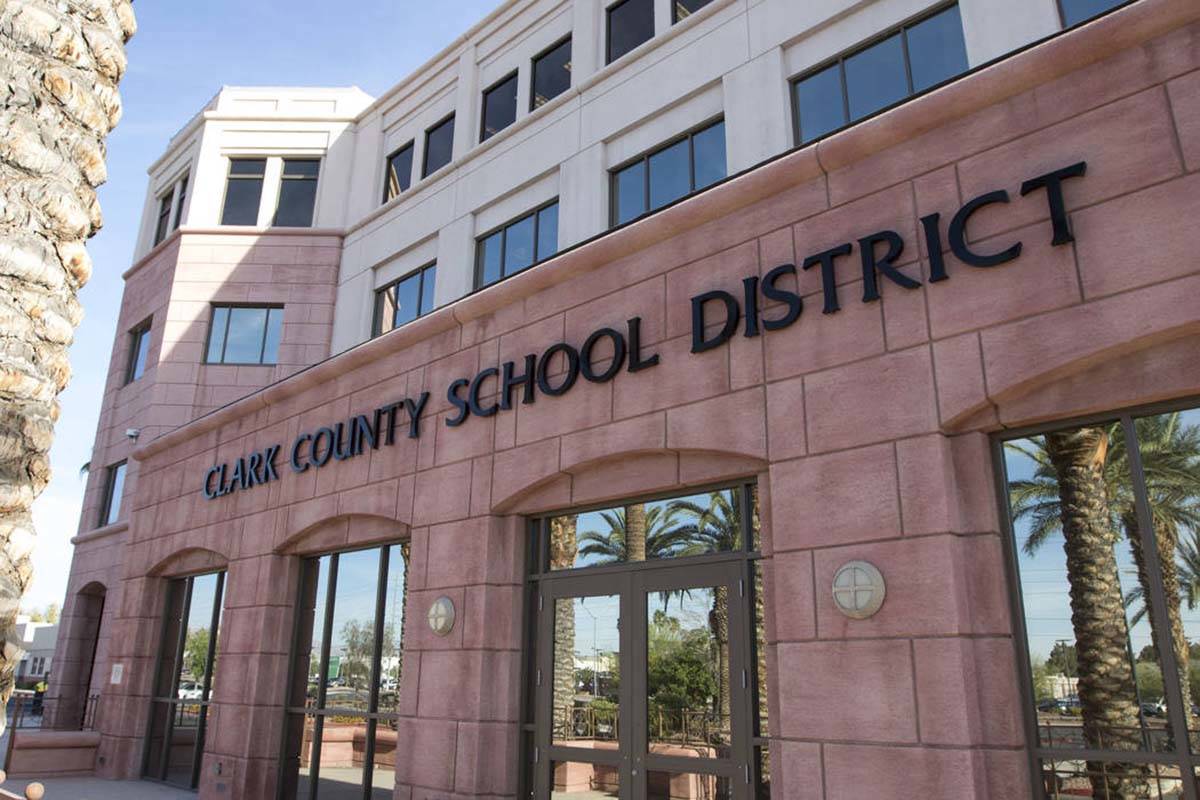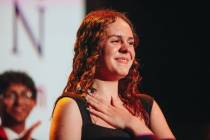Clark County schools’ white students left in greatest numbers
The Clark County School Board heard an update Thursday that included a breakdown of the district’s enrollment drop of 12,622 students by ethnicity.
White students left the district in the greatest numbers, with a drop of 9.5 percent from last year, or about 7,202 students.
Black students and students identified as multiracial had the lowest enrollment drops, at 0.8 and 0.6 percent from last year respectively, or 370 and 132 students.
Chief Operations Officer Mike Casey added that pre-K to third grade enrollments were down by 8.5 percent, or over 8,000 students. Withdrawals to private school were up over 1,000, while withdrawals to charter schools were up over 2,000. A total of 2,122 students submitted an intent to home-school.
All students groups also experienced a drop in average daily attendance.
Despite the enrollment numbers consistent with 2019-20, Black students experienced the greatest drop in attendance from last year according to the presentation, at an 8.5 percent lower rate. Students identified as multiracial had a 5.6 percent lower rate, and Hispanic or Latino students had a 4.7 lower attendance rate.
Update on health data
The Clark County School Board also was updated on health data relevant to reopening schools, with the latest numbers showing a mild rise in COVID-19 community transmission, according to the Southern Nevada Health District chief.
Another portion of the presentation also dealt with mental health data requested by trustees at the last board meeting.
The health district’s interim health officer, Fermin Leguen, said there has been a small increase in the number of COVID-19 cases reported in the community, and that Clark County data still shows a higher risk of transmission in schools. No vote on reopening schools was scheduled for Thursday.
“What it means is that there’s a mild increase in transmission in the community, perhaps related to Labor Day. That’s what we are assuming at this point,” Leguen said. “The increase is not similar to what we experienced in July or August; it’s far from that.”
Leguen last presented to the board in September, reporting a downward trend in COVID-19 cases that he expected to continue. As of Thursday, Leguen said, the health district is also waiting to see the effects of recent gubernatorial directives expanding gathering sizes.
Among the school district’s seven rural schools that have reopened at least part time, Leguen said, there have been three cases of COVID-19 among students since Sept. 6. The health district has not seen a related surge among adults, he added.
Those schools’ ability to meet social distancing guidelines was the primary determining factor in whether they could reopen, Superintendent Jesus Jara said.
Leguen’s presentation said that among all students between Sept. 27 and Oct. 1, there were 36 cases of COVID-19 among children up to 4 years old, 66 cases among 5- to 12-year-olds and 70 cases among 13- to 17-year-olds.
Leguen said there hadn’t been any outbreaks in child care settings.
CCSD Superintendent Jesus Jara said he had spoken to Leguen about presenting a plan in October to bring some students — like those in self-contained classrooms — back to classrooms, with precautions such as regular testing in place. But with cases on the rise, Jara said he had concerns about such a plan.
Mental health
The board also heard an update on mental health data as requested by multiple trustees at the last meeting. Chief College, Career, Equity, and School Choice Officer Mike Barton said the first two months of the 2020-21 school year saw as many student suicides as all of 2019-20.
“Which, frankly, is alarming,” Barton said.
Referrals to support services like The Harbor are low compared with last year, according to the presentation, as are calls to SafeVoice and the Handle With Care program. Reports of suicide ideation are also low, Barton said, with speculation that the drop may be related to less face-to-face contact.
Joe Roberts, a coordinator in the Department of Student Threat Evaluation and Crisis Response, said part of the issue is that risk assessment teams are not trained to provide assessments virtually. If staff members could return under social distancing protocols and allow families in crisis to make appointments, they could resume those assessments.
“I’m certain we could do something about those numbers,” Roberts said.
The presentation prompted an emotional plea from Trustee Chris Garvey, who said a conversation on reopening schools was needed.
“We refuse to have the conversation about what is the risk versus what we know is happening. I know some trustees are very, very adamant about not going back to school. But for some children, school is a matter of life or death,” she said. “Until we have that conversation, we keep bending the rule to have them go get their food … to get them tested … to get a wellness check. We’re missing the point, and it’s hitting us in the face.”
But Trustee Lola Brooks said reopening buildings immediately likely would not address all the challenges that students and families are facing — especially given that school will be different than in the past.
“A lot of the triggers that happen for suicide ideation are things that are in abundance right now: financial insecurity, academic failure,” Brooks said. “I don’t want us to underestimate all these variables that are outside our control, but I recognize the seriousness and that we have to do something.”
Trustee Danielle Ford said mental health has long been neglected at the district, and that the consequences are now coming to light. She said the district needed to allocate resources to the issue and consider options like a parent hotline, while also analyzing whether particular student characteristics — experiencing a loss, taking care of younger siblings, or disengaging from distance learning — have been risk factors.
Ford requested options for reopening other than the hybrid cohort model, and said she’d support a return to schools for small groups of the most vulnerable students under health guidelines.
A final component of the presentation showed the results of an employee survey asking staff if they would return to school buildings upon reopening if they still had the option to telecommute: 55 percent of 23,736 respondents said they would return under the hybrid or full-time return model, 17 percent said they’d return only full-time and 28 percent said they would not return.
The board also heard an update on the Task Force Initiative for Educator’s Safety and Screening, a statewide program to screen staff upon returning to schools funded by $13.2 million in CARES Act funds and administered by the Teachers Health Trust, the district’s health plan for educators.
The money for the program must be used by Dec. 31 2020, according to Jara. Attorney Eleissa Lavelle also said the program would be voluntary for staff.
Another presentation on COVID-19 is slated for Oct. 22.
Contact Aleksandra Appleton at 702-383-0218 or aappleton@reviewjournal.com. Follow @aleksappleton on Twitter.
Where to get help
If you are in crisis, the toll-free National Suicide Prevention Lifeline is available at 1-800-273-TALK (8255) 24 hours a day, seven days a week. More information is available at www.suicidepreventionlifeline.org.























